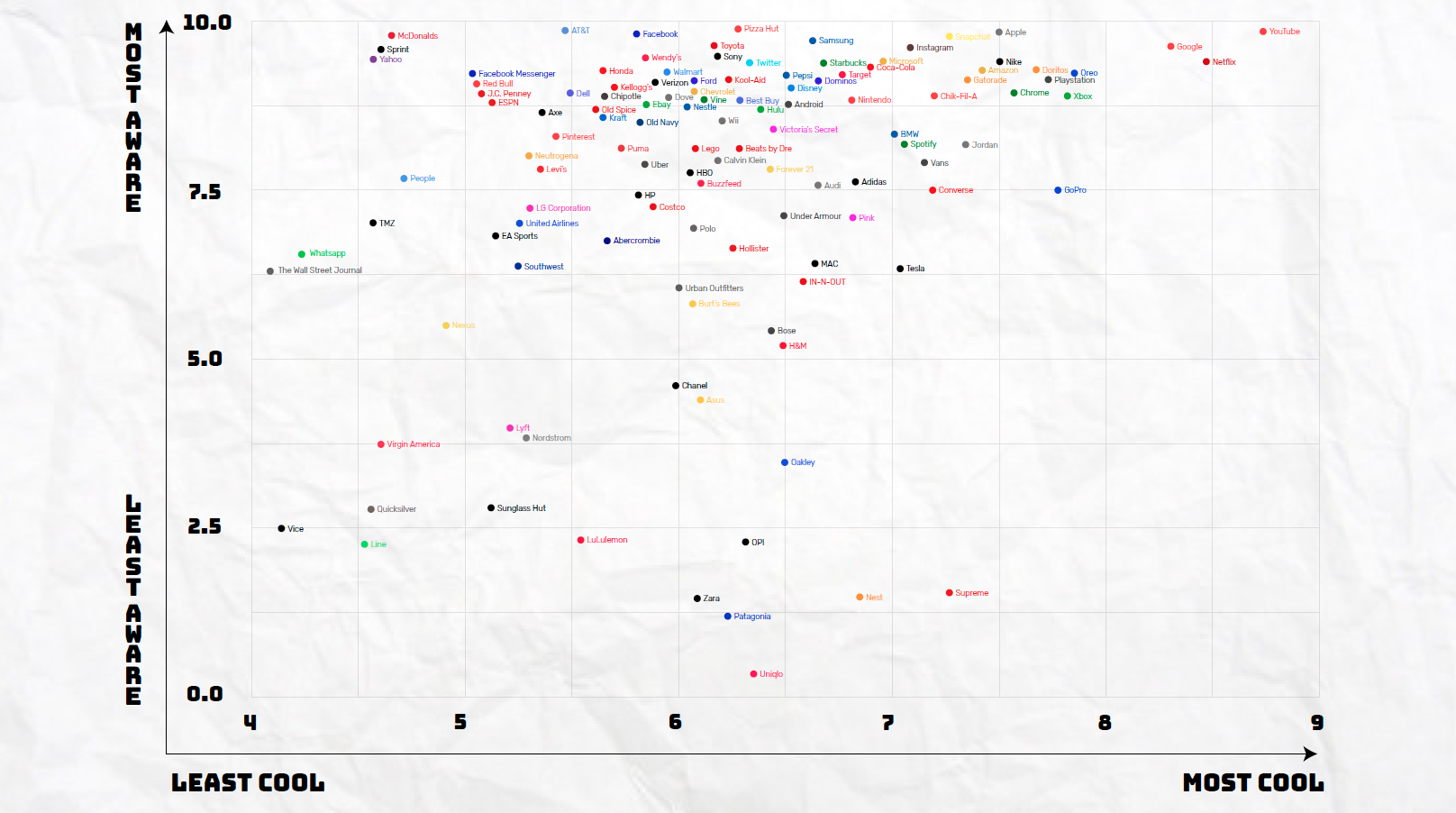
We have barely started to understand millennial customers, and it is already time to move on. Say hi to the Generation Z, the first ‘truly mobile-first’ generation of customers, set to disrupt (again) the way you plan and execute your business.
Till now, the GenZ has been overlooked in marketing research, because younger customers did not have the same purchasing power of the previous generations. The spotlight was on Millennials, but things are swiftly changing.
Just so we are clear:
- The Generation Y, what we call Millennials, includes those born between the early 1980s to the mid 1990s.
- The Generation Z, also know as Post-Millennials or iGeneration, includes those born between the mid 1990s to the early 2000s.
Millennials have captivated marketers and researchers for the past five years or so because they have represented the final transition from an analog to a digital world. They were - and still are - the first digital customers, with a very peculiar mindset and unprecedented needs and desires.
The digital customer is, still today, the primary focus of business planning, but there are new kids in town, and you should not ignore them. We are talking about almost 60 million teens in the US alone, that translates into more than a quarter of the entire US population.
While the two generations have some traits in common, in fact, they also show different behaviors and approaches when it comes to technology. The GenZ grew up submerged in a digital world, shaped by mobile devices. They do not know other world but this.
Millennial customers were mobile pioneers, but today’s teens are mobile natives. A huge difference. They live in symbiosis with their smartphone; they rely on Google, social networks, and communities for all daily activities.
They are not shy about buying online from their mobile devices and, even when they go to the retail store, they walk in expecting something fresh, innovative, engaging. A powerful customer experience, in a few words.
This generation of customers brings to completion the evolutionary trajectory started with the Millennials. They had phones when they were in elementary or middle school, and that shift is already shaping customer journeys that you need to study and understand.
Your business will be affected by their behaviors sooner or later. They are young but, even today, they spend something like 44 billion dollars annually (in the US alone). This figure is set to grow exponentially in the near future.
The first step to understanding the post-millennial customers is to compare them with the previous generation. Last year, in an article published on The Huffington Post, George Beall tried to identify how the GenZ differs from the GenY. What came out is something that you should bear in mind when you plan your next marketing moves.
Among other things, post-millennials teens are:
- Less focused: They process information faster thanks to mobile apps, and their attention span is significantly lower than other customers.
- Multi-Taskers: Whatever they do, they do it using multiple devices. This behavior is critical when you try to frame their purchase behaviors.
- Less price-obsessed: They favor the experience over the bargain. Price is steadily losing weight in the list of factors that influence the purchase.
- More demanding: “They expect businesses, brands, and retailers to be loyal to them. If they do not feel appreciated, they are going to move on. It is not about them being loyal to the business.” (Marcie Merriman, Ernst & Young)
- More social: born and grown with a smartphone in their hands, they are strictly linked to their social communities and communicate mainly through mobile apps (Snapchat, YouTube, Instagram).
- More global: Millennials were the first global generation, thanks to the Internet, but the GenZ is even more ‘global’ in their thinking, interactions, purchase behaviors.
Putting all the pieces together we see that the smartphone is the pivot around which the whole existence of teenagers revolves. A further confirmation comes from a recent report by Google titled “Generation Z - New Insights Into The Mobile-First Mindset Of Teens”.
The first finding is precisely the importance of phones. Getting a phone is a life-changing event, up there with graduation and driving license. While teens have more devices than ever at their disposal, the smartphone is the most used. Moreover, they usually get it earlier than previous generations (the median age is 12).
 (Click on the picture to enlarge)
(Click on the picture to enlarge)
The smartphone acts as a bridge that connects the offline and online experiences of teens. Visual contents, messaging apps, social networks, and video games create the environment in which they share their life and find entertainment. Fun - or maybe not fun at all - fact: Nearly 3 in 10 teens say they text with people who they are physically with at the time.
Another research finding states something we have already said: GenZ is a mobile-first shopping generation. Teens have a peculiar idea of what is ‘Cool’, they know what they want, and they buy it online. Video games, books, and apparel are the most common products bought online.
What is really interesting is that they buy online not only because it is more convenient and they can find better deals, but also because they can see multiple brands and retailers without leaving home, and they can choose faster than going to the physical store.
All in all, 53% of those between 13 and 17 years old mostly use the smartphone to make online purchases. If you are a retail brand trying to establish your position in a hyper-crowded market, you might want to take note of this new habit.
The technology is ‘how’ they make purchases, and the ‘Cool Factor’ is the foundation of ‘why’ and ‘what’ they choose one product over another. What aspects make a product cool? The word-of-mouth (offline and online) is still the main factor affecting the choices, and the new forms of advertising come right after.
The third factor, though, is what draws our attention: Something is cool if it is personalized to me. Millennials have been called the Me-Generation because of their self-obsession; with the GenZ, this trend is expected to undergo a fast track.
Personalization is the foundation of cool contents, products, and experiences. Something is cool if it is unique, impressive, interesting, awesome. If they perceive that it is tailored to them, on their dreams and desires.
They expect big things. Your challenge is to live up to the standards and exceed their expectations. After all, these young customers represent the future of your business. A future that is already here.
Download The Mobile Engagement Playbook, a collection of relevant insights that'll help you to overcome the challenges of the digital transformation and grow your business exponentially.



 Your magnifing glass to deeply understand your users and increase the value of each relatonship.
Your magnifing glass to deeply understand your users and increase the value of each relatonship. Listen to the voice of your customers deeply to understand what they truly want.
Listen to the voice of your customers deeply to understand what they truly want. The Lead Generation Platform to get leads from anonymous traffic on your website.
The Lead Generation Platform to get leads from anonymous traffic on your website.  Understand the behavior of people in physical spaces and monitor safety requirements.
Understand the behavior of people in physical spaces and monitor safety requirements. The Digital Commerce Platform designed to follow the most modern technological standards..
The Digital Commerce Platform designed to follow the most modern technological standards.. The XReality platform to tell brand and product stories by connecting physical and digital worlds.
The XReality platform to tell brand and product stories by connecting physical and digital worlds. Points, rewards, levels, badges, missions: a world of nudges to nurture your customer community.
Points, rewards, levels, badges, missions: a world of nudges to nurture your customer community. Discover all the other solutions!
Discover all the other solutions!









